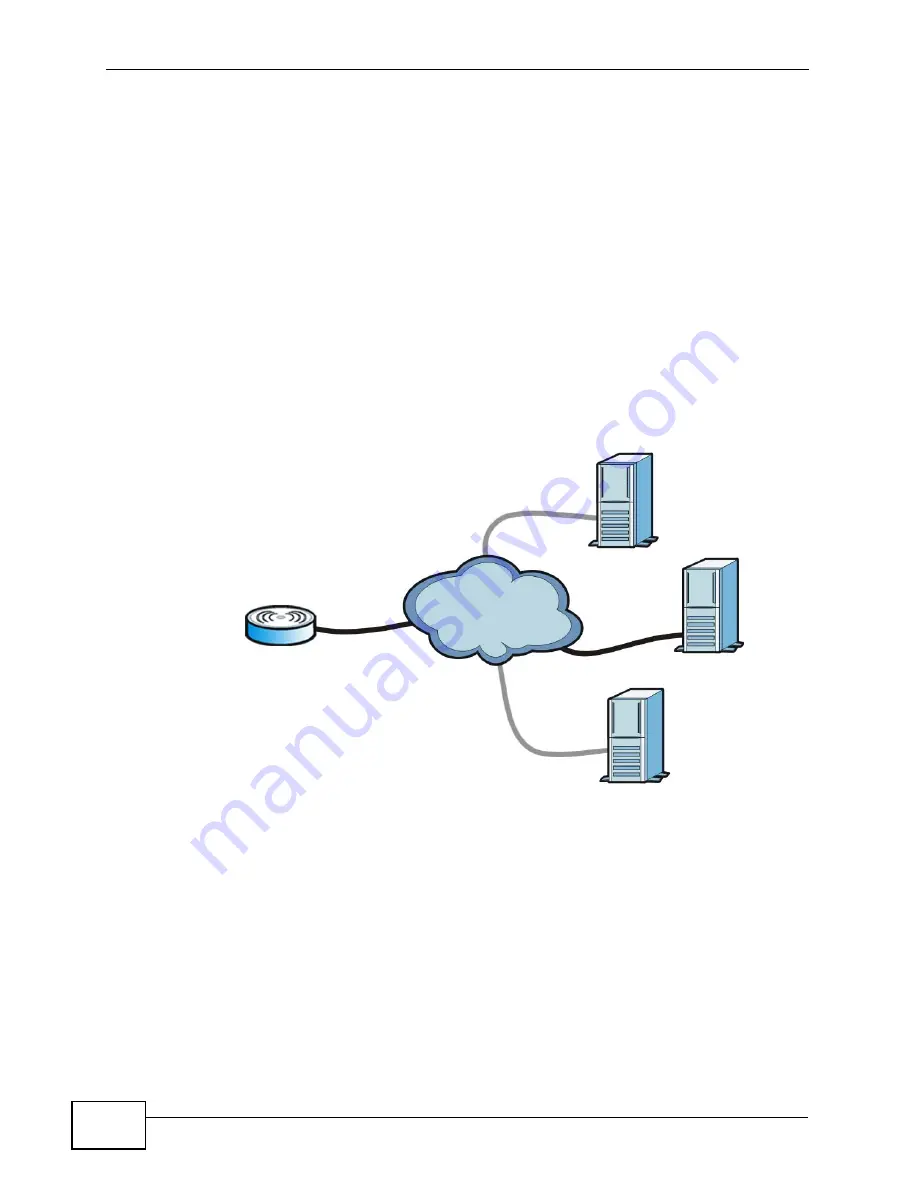
Chapter 18 The Remote Management Screens
User’s Guide
212
18.8 TR0-69
TR-069 is an abbreviation of “Technical Reference 069”, a protocol designed to
facilitate the remote management of Customer Premise Equipement (CPE), such
as the WiMAX Modem. It can be managed over a WAN by means of an Auto
Configuration Server (ACS). TR-069 is based on sending Remote Procedure Calls
(RPCs) between the ACS and the client device. RPCs are sent in Extensible Markup
Language (XML) format over HTTP or HTTPS.
An administrator can use an ACS to remotely set up the WiMAX Modem, modify its
settings, perform firmware upgrades, and monitor and diagnose it. In order to do
so, you must enable the TR-069 feature on your WiMAX Modem and then
configure it appropriately. (The ACS server which it will use must also be
configured by its administrator.)
Figure 94
TR-069 Example
In this example, the WiMAX Modem receives data from at least 3 sources: A SIP
server for handling voice calls, an HTTP server for handling web services, and an
ACS, for configuring the WiMAX Modem remotely. All three servers are owned and
operated by the client’s Internet Service Provider. However, without the
configuration settings from the ACS, the WiMAX Modem cannot access the other
two servers. Once the WiMAX Modem receives its configuration settings and
implements them, it can connect to the other servers. If the settings change, it
will once again be unable to connect until it receives its updates from the ACS.
The WiMAX Modem can be configured to periodically check for updates from the
auto-configuration server so that the end user need not be worried about it.
SIP
ACS
HTTP
Summary of Contents for MAX-306M1
Page 2: ......
Page 8: ...Safety Warnings User s Guide 8...
Page 10: ...Contents Overview User s Guide 10...
Page 24: ...List of Figures User s Guide 24...
Page 30: ...30...
Page 63: ...63 PART II Basic Screens The Main Screen 38 The Setup Screens 65...
Page 64: ...64...
Page 72: ...72...
Page 84: ...Chapter 7 The LAN Configuration Screens User s Guide 84...
Page 96: ...Chapter 8 The WAN Configuration Screens User s Guide 96...
Page 108: ...Chapter 9 The VPN Transport Screens User s Guide 108...
Page 118: ...Chapter 10 The NAT Configuration Screens User s Guide 118...
Page 130: ...130...
Page 148: ...Chapter 12 The Service Configuration Screens User s Guide 148...
Page 158: ...Chapter 13 The Phone Screens User s Guide 158...
Page 164: ...Chapter 14 The Phone Book Screens User s Guide 164...
Page 166: ...166...
Page 188: ...Chapter 15 The Certificates Screens User s Guide 188...
Page 198: ...Chapter 16 The Firewall Screens User s Guide 198...
Page 218: ...Chapter 19 QoS User s Guide 218...
Page 234: ...Chapter 20 The Logs Screens User s Guide 234...
Page 247: ...247 PART VI Troubleshooting and Specifications Troubleshooting 249 Product Specifications 257...
Page 248: ...248...
Page 256: ...Chapter 22 Troubleshooting User s Guide 256...
Page 264: ...Chapter 23 Product Specifications User s Guide 264...
Page 266: ...266...
Page 298: ...Appendix B Setting Up Your Computer s IP Address User s Guide 298...
Page 308: ...Appendix C Pop up Windows JavaScripts and Java Permissions User s Guide 308...
Page 352: ...Appendix E Importing Certificates User s Guide 352...
Page 354: ...Appendix F SIP Passthrough User s Guide 354...
Page 370: ...Appendix I Customer Support User s Guide 370...
Page 376: ...Index User s Guide 376...
















































